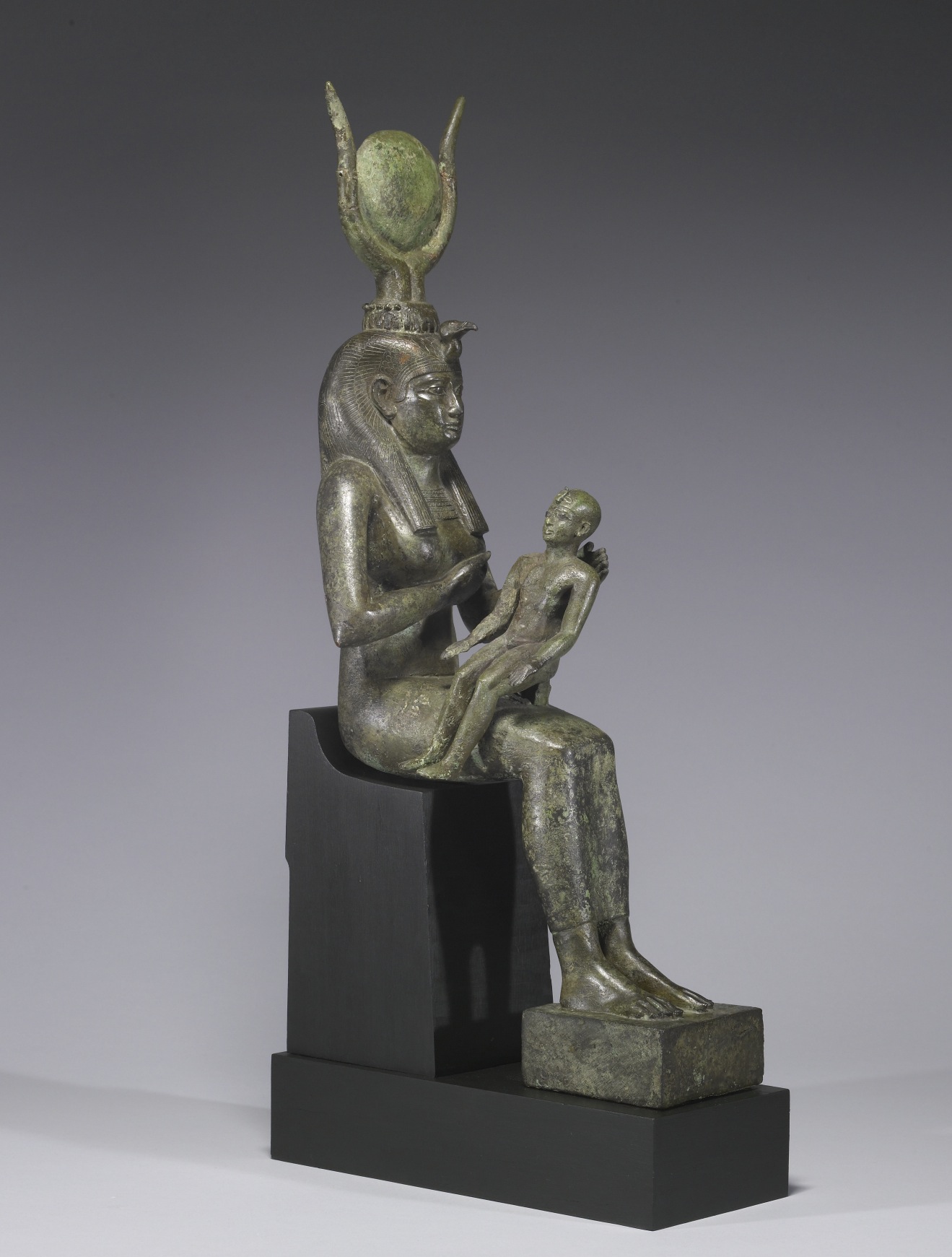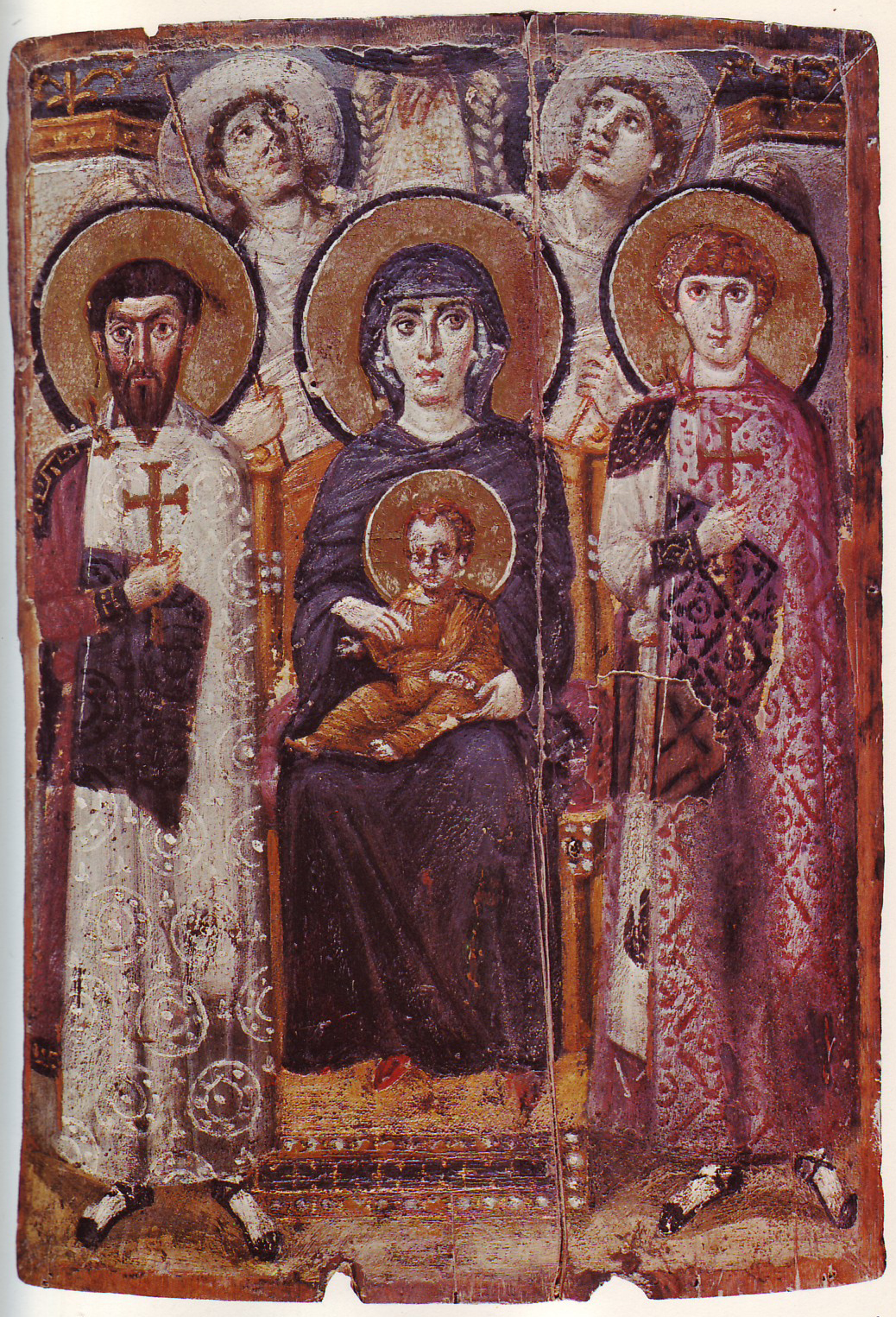Invisible Properties
During the Christmas season I was reading Arthur Danto’s What Art Is*. At this latter stage of life, I don’t like Christmas, although there was a time when I worked mightily to engage with it. Danto helps me re-appreciate, if not re-capture, some of the nativity’s numinous joy — oddly, by making it cerebral. His argument is fascinating, that the Christian mystery of incarnation helped inspire a new aesthetic in European Renaissance painting.
“... [T]he primordial image of Western art is that of mother and child,” he tells us. Yet it took until the Renaissance for visual artists to express a love relationship between the mother and her child. Images of Isis and Horus show “not the slightest sign of love.”
Similarly, Christian Marion art from its beginnings in the 5th century through Medieval times, depicted nothing cozy about the mother-son duo. Rigid, remote, and ceremonial, they are not for viewers to identify with, but to worship and adore.
Danto says the real revolution in Renaissance art “rather has to do with representing human beings through their inner states — suffering in the crucifixion, hunger in the Christ child nursing, and above all, love in the way the Madonna holds the Child…. These inner states are human universals, but they do not turn up, for deep cultural reasons, in other artistic traditions — certainly not, for example, in classical art, however beautiful, and certainly not in African art, however powerful.” (85-6)
I am not a believer in a personal god, benevolent or otherwise. But the idea is deeply moving that the Christian myth (“myth” as a psychological truth) of god, incarnated in flesh, opened artists to seeing and expressing the invisible, subjective reality of a person’s inner world.
Incarnation is a theme with Danto. He calls “ideas made incarnate, the great secret of art.” (131) He created a philosophical definition, that “works of art are embodied meaning.” (37) If so, art must be a necessary human activity because conscious creatures seem compelled to assign meaning … to any thing, any where, any time. Danto states that meaning and embodiment are the only two properties he can find that are shared by all forms and eras of art. Meaning is an invisible, nonsensory property expressed through the sensible materials that embody it. That makes art a fundamental metaphor. Two disparate entities, one alien to this world and one which is this world, are successfully linked in a way that enhances them both.
According to Danto, Kant articulated the nature of this metaphor in his concept of the aesthetical idea:
“Kant speaks of ideas ‘partly because they at least strive after something which lies beyond the bounds of experience’ — but they are aesthetical ideas because we have to use what does lie within experience in order to present them. Art, in his view, uses experience in this way to carry us beyond experience.” (124)
That which cannot be held is put into your hand. The invisible is unveiled. The private is revealed. Silence sings. That which was not, becomes. With tremendous vigor, we seek to get beyond, above, or outside the confines of a material world.
“As above, so below,” declares the Emerald Tablet*, a list of pithy alchemical aphorisms. It seems to be saying that our material world (the below) is an effable version of the ineffable (above.)
Perhaps that is one of the embodied meanings of modern art, which can be so puzzling. Danto tells us, “Today art can be made of anything, put together with anything, in the service of presenting any ideas whatsoever,” which, he admits, “puts great interpretative pressures on viewers.” (128) We viewers agree.
Art appreciation created less anxiety when the Church delivered meaning directly to artists for embodiment. And yet, the message remains the same: look to find the divine/the unseen/the abstract, hidden in plain sight. It’s right before your eyes, embodied there in the profane/sensory/concrete materials of the world.
God is embodied in a baby.









